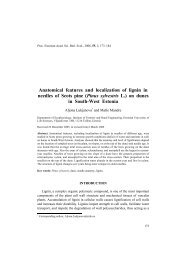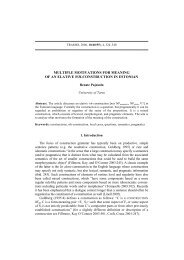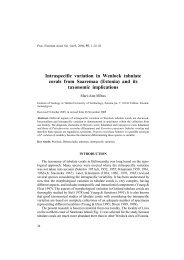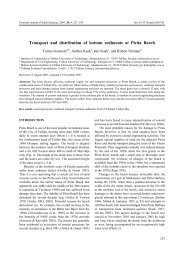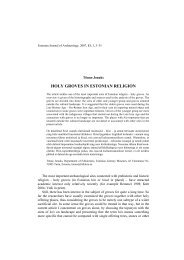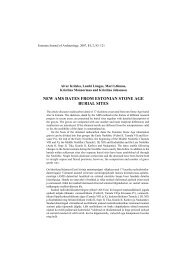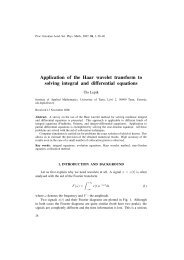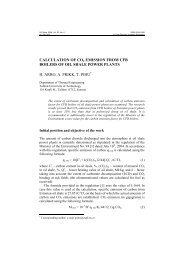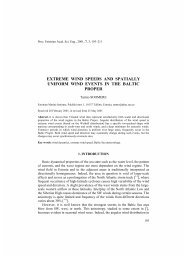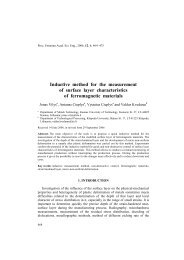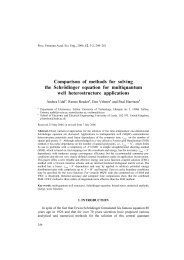Dynamic coefficients in impact mechanics
Dynamic coefficients in impact mechanics
Dynamic coefficients in impact mechanics
Create successful ePaper yourself
Turn your PDF publications into a flip-book with our unique Google optimized e-Paper software.
to illum<strong>in</strong>ate the work<strong>in</strong>g area [ 5,6 ]. The light area was produced by widen<strong>in</strong>g the<br />
laser beam with a cyl<strong>in</strong>drical lens. The <strong>impact</strong> event was recorded with a digital<br />
video camera and transferred <strong>in</strong>to a PC. The video images were then decomposed<br />
<strong>in</strong>to <strong>in</strong>dividual frames with software. A calibration procedure was carried out to<br />
elim<strong>in</strong>ate any distortions.<br />
Figure 2 shows the particle accelerator, which was specially developed by<br />
SIVUS GmbH at Chemnitz University of Technology, Germany, for the<br />
determ<strong>in</strong>ation of dynamic <strong>coefficients</strong>. The particles leave the feed<strong>in</strong>g system<br />
and enter the particle accelerator (a rotat<strong>in</strong>g disk). This accelerator permits a<br />
precise evaluation of the collision variables. A centrifugal force drives particles<br />
through the channels of the accelerat<strong>in</strong>g disk that is set <strong>in</strong> rotation by a<br />
circulat<strong>in</strong>g belt [ 5,7 ]. Be<strong>in</strong>g pushed by the centrifugal force, the particles move<br />
towards a target that can be fixed at a correspond<strong>in</strong>g angle onto a bracket of the<br />
cover. Therefore the particles outlet has a fixed spatial position and a negligible<br />
rotation.<br />
Steel and ceramic–metal composites (cermets) of different composition were<br />
used as target materials. Composition of the tested materials and hardness ratio of<br />
the material and glass particles (HV = 540) are listed <strong>in</strong> Table 1.<br />
Fig. 2. Experimental facility.<br />
Table 1. Composition and mechanical properties of materials tested<br />
Grade Composition Vickers<br />
hardness, HV10<br />
Hardness ratio,<br />
HV /HV<br />
C20 80wt % Cr 3 C 2 + 20wt %Ni 1140 2.11<br />
W15 85wt % WC + 15wt %Co 1258 2.33<br />
C20S 80wt % Cr 3 C 2 + 20wt %Ni (reaction s<strong>in</strong>ter<strong>in</strong>g) 1233 2.28<br />
St 16MnCr5 steel 740 1.37<br />
m<br />
p<br />
30



